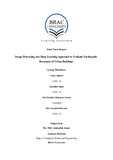| dc.contributor.advisor | Alam, Dr. Md. Ashraful | |
| dc.contributor.author | Ahmed, Yasin | |
| dc.contributor.author | Alam, Tawsiful | |
| dc.contributor.author | Shakil, Md. Hasibur Rahman | |
| dc.contributor.author | Hossain, Md. Tanjidul | |
| dc.date.accessioned | 2018-12-18T09:49:22Z | |
| dc.date.available | 2018-12-18T09:49:22Z | |
| dc.date.copyright | 2018 | |
| dc.date.issued | 2018 | |
| dc.identifier.other | ID 13301118 | |
| dc.identifier.other | ID 13301114 | |
| dc.identifier.other | ID 13301016 | |
| dc.identifier.other | ID 13101153 | |
| dc.identifier.uri | http://hdl.handle.net/10361/11025 | |
| dc.description | This thesis is submitted in partial fulfilment of the requirements for the degree of Bachelor of Science in Computer Science and Engineering, 2018. | en_US |
| dc.description | Cataloged from PDF version of thesis. | |
| dc.description | Includes bibliographical references (pages 42-44). | |
| dc.description.abstract | The capital of Bangladesh, Dhaka, is one of the most densely populated cities in the world, sits atop the world’s largest river delta at close to sea level, which can trigger a massive earthquake resulting in death of millions of people. To minimizing such casualties, marking risky buildings can be an efficient approach as these buildings have more chance to collapse. In this paper, a new approach has been introduced on spotting these buildings by taking visual view through images and calculating the risk factors using Image Processing and Deep Learning. By following FEMA154 method of calculating risk factors of C3 type URM INF buildings, Image processing has been applied on the image data to get results and SVM has been run on the manual data of the risk factors. We used neural network model VGG16 and altered it to a newer version for beam detecting via images. The buildings have been shown in the map marking red or green to let people know about the vulnerability of these buildings. | en_US |
| dc.description.statementofresponsibility | Yasin Ahmed | |
| dc.description.statementofresponsibility | Tawsiful Alam | |
| dc.description.statementofresponsibility | Md. Hasibur Rahman Shakil | |
| dc.description.statementofresponsibility | Md. Tanjidul Hossain | |
| dc.format.extent | 44 pages | |
| dc.language.iso | en | en_US |
| dc.publisher | BRAC University | en_US |
| dc.rights | BRAC University theses are protected by copyright. They may be viewed from this source for any purpose, but reproduction or distribution in any format is prohibited without written permission. | |
| dc.subject | Earthquake | en_US |
| dc.subject | Deep learning | en_US |
| dc.subject | Image processing | en_US |
| dc.subject | Machine learning | en_US |
| dc.subject.lcsh | Image processing--Digital techniques. | |
| dc.subject.lcsh | Natural disasters. | |
| dc.title | Image processing and deep learning approach to evaluate earthquake resistance of urban buildings | en_US |
| dc.type | Thesis | en_US |
| dc.contributor.department | Department of Computer Science and Engineering, BRAC University | |
| dc.description.degree | B. Computer Science and Engineering | |

